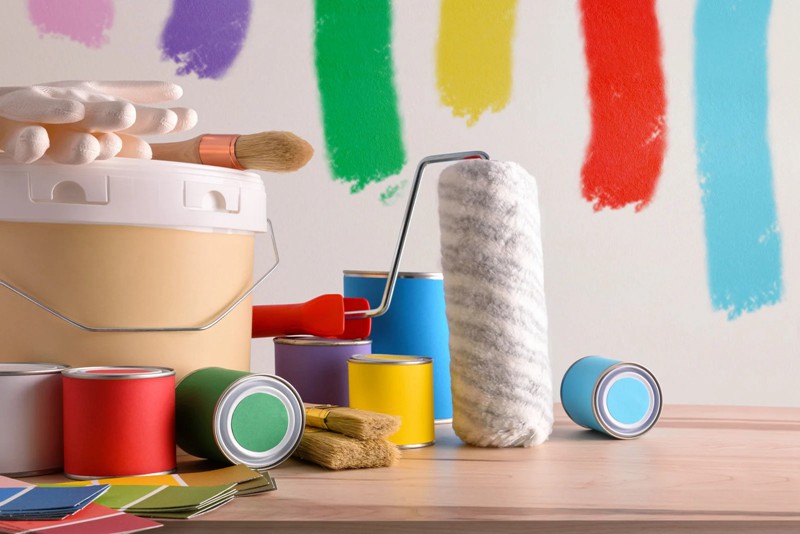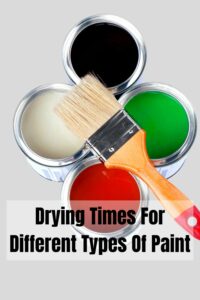Have you considered making a design come to life with plastic and paint for a long time? Or do you always do this at work and need new ideas? Don’t bother looking any further. You’ll find your answers here.
You could be renovating your home or trying out a new DIY project; you could even be undertaking a significant recycling project. In any case, you’re about to paint some plastic. The best thing about painting plastic is that anyone can do it!
This task does not require a lot of complicated materials, but you need to use appropriate tools and follow some simple steps to get the best results.
Continue reading to learn more about the materials used and the step-by-step plastic painting process.

Table of Contents
Why Do You Need to Paint Plastic?
You might be contemplating transforming that plastic with a new paint sheen. Well, worry no more. This is your cue to get started. Here are some reasons why that plastic ornament might need to be repainted:
The Plastic Looks Old and Worn-out
Sometimes we have sentimental attachments to old plastic objects. You can’t throw them out, but they’re no longer a pleasant sight. For things like this, you can always repaint them, and if they’re genuinely dear to your heart, you’ll want to do an excellent job.
To Remove Scratch Marks
Repainting can be an option when some newer plastic objects have scratches that leave them beyond recognition. It’s even worse if these plastics are visible. So, before you hide that plastic piece, try painting it.
To Match the Color Scheme of Your Space
When it comes to the aesthetics of a space, the color theme is essential. Clashing colors will throw off the ambiance, and one will not get the desired results for their corner. You shouldn’t let a few plastic ornaments or flowerpots do that.
You Care About the Environment
Recycling plastic is one of the most eco-friendly means to a greener earth. Rather than disposing of plastic containers and jars, there are numerous designs to decorate your space. This move could be your small contribution to a greener, safer world.
Because You Can (Pun Intended)
Painting is fun, and there doesn’t always have to be a tangible reason. Add that splash of color if you want to. Remember to display your masterpiece proudly after you’ve painted it.
Different Paint to Use on Plastic
Although many painters have verified acrylic paint to be the best paint for plastic, there are still other types of paint for plastic.
We classify acrylic paint under standard exterior gloss paint. Alongside acrylic are oil-based paints. They both have a shiny and smooth appearance; however, they are different. Acrylic paint is water-based, not oil-based, and has a lighter consistency.
Although oil-based paint has a glossier finish, acrylic sticks better to surfaces and dries more quickly than oil-based paint. That is why most people prefer acrylic paint for painting plastic. Oil-based paint will slide right off the plastic.
Painting Methods Used for Painting Plastic
As for the current methods of painting plastic, there are two standard methods most painting enthusiasts use.
For your paint jobs, you can decide to use spray paint. Spray painting is currently the preferred option, especially if you want to do the job faster, easier and smoother. It is faster because rather than repeatedly dipping the brush in the paint, especially for more oversized items, you can get some coats done in that time.
Also, if you’re not going for the hand-made look, spray painting is your best bet, as there are no marks or drips if you do it properly. There are guidelines for spray paint for that needed outcome, which we’ll highlight below.
The second method used is the paintbrush method; some use a roller. Painters usually employ this for DIYs and other hand-done jobs.
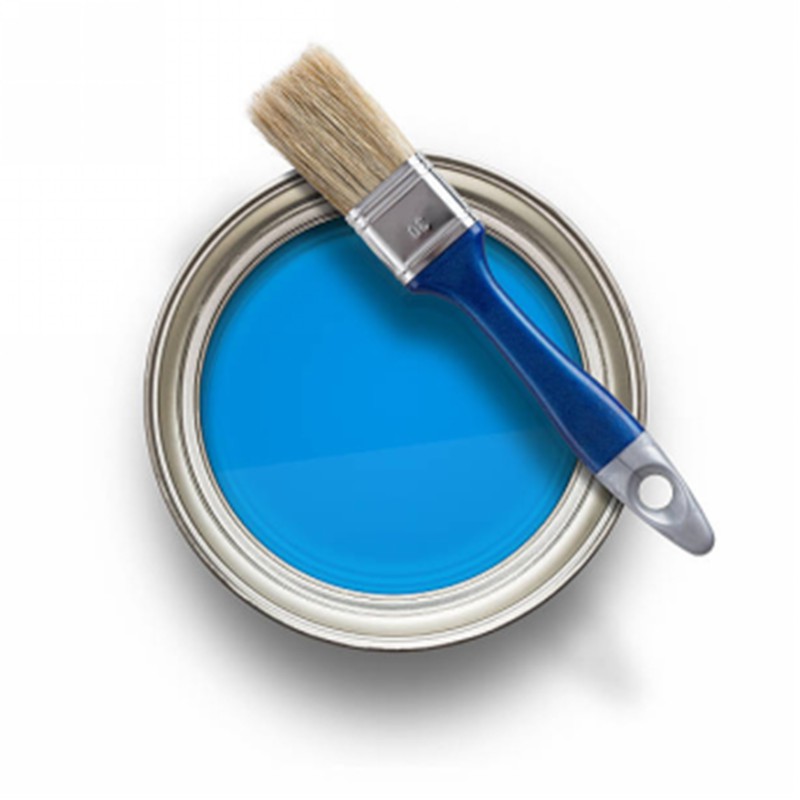
Tools Needed to Paint Plastic
Spraying paint requires slightly different tools than painting with a brush. Here are the tools required for both instances so you can pick the method that suits you. Some materials aren’t necessary for painting directly but will be crucial to your paint job.
Tools for Spray Painting
- 180-grit Sandpaper
- Acrylic spraypaint
- Isopropyl alcohol or anti-static cleaner
- Polyurethane or sealant
- Plastic primer
Tools for Painting with a Brush
- Flat mouth paint brush
- Acrylic paint
- Primer
- 180-grit Sandpaper
- Rubbing alcohol/ isopropyl alcohol
- Paint thinner
Some other materials worth mentioning are disposable cloths, soap, a bowl for water, and a sponge or wash brush. You also need protective gear like gloves and a nose mask.
Precautions for Painting Plastic
Even before you begin painting, there are some steps you should take to ensure the desired outcome. These preliminary steps are also preventative measures to keep paint from getting onto surfaces it was not intended for.
Preparing Your Plastic for Panting
Some preparatory actions include taking your paint job outside to a well-aerated area, such as your garage or backyard, where the fumes will not affect others.
Then, to prevent stains, place canvas material on the floor. The canvas material absorbs the paint rather than allowing it to slide off. If you do not have access to this, old newspapers will suffice.
Another step in the preparation process is thoroughly washing the plastic with soap and warm water. This washing method removes dirt beneath the paint, which causes paint bubbles and hinders adhesion. After cleaning the plastic, pat it dry completely before applying primer or paint.
Before you begin painting, try your skills on another less important object than the main one to prepare.
Painting Safety Tips
To protect yourself, always wear gloves and a nose mask when handling paint, especially if spraying it on. Some paints contain dangerous chemicals, and while you can choose less hazardous variants, it’s always a good idea to be cautious.
Also, when working with isopropyl alcohol, thoroughly wash your hands and all surfaces it touches to avoid accidental consumption. Keep it in a cool, dry place because heat can degrade the alcohol. After that, make sure you properly seal the container.
Easy Steps on How to Spraypaint Plastic
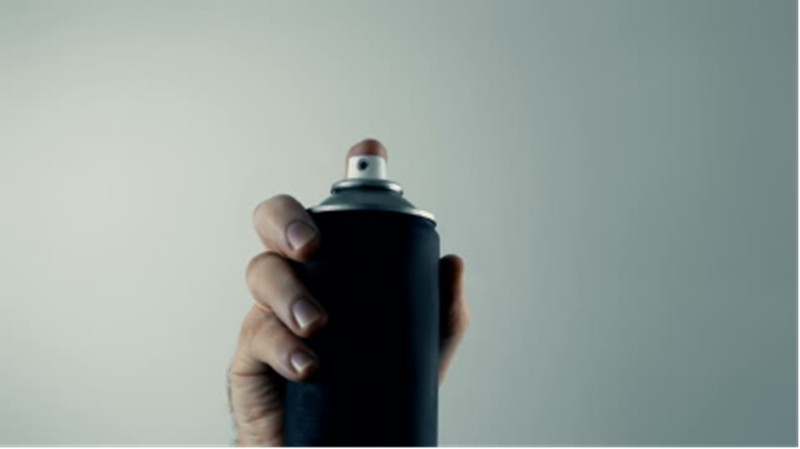
Having the right paint, taking proper precautions, and getting the right tools will put you on the right path for a fantastic paint job. Here’s a step-by-step guide on how to paint plastic.
Step1: Sand the Plastic
For smaller surfaces, mechanically sand your plastic gently with 180-grit sandpaper to give it a rough matte finish for easy paint adhesion. The smooth surface of plastic will prevent paint from staying on the plastic and help it have a good finish.
However, you’ll need an electric sander that isn’t too powerful for larger surfaces so that the heat doesn’t melt the surface. Remember, you want to reduce the glossiness of the object, not change the shape or create deep scratches.
Step 2: Work on a Clean Surface
The next step is to wipe off the dust with a cloth soaked in isopropyl alcohol. Doing this prevents plastic dust from getting in the way of the painting.
Pro Tip: Take extra care while using isopropyl alcohol, as seen in the preventive tips.
Step 3: Prime your Plastic
Next, apply your primer. Two light coats of primer are good enough. Primer will improve the adhesion and smoothness of your paint. The type of primer you need will be determined by the kind of plastic you’re painting.
Step 4: Spray Paint Your Plastic.
After applying primer, it’s time to spray on the paint. To do this, spray paint the plastic with light coats and let it dry for two hours before applying a second coat. You can also apply a final coat for complete coverage.
This method prevents dripping because sprayed-on paint tends to pile up on a spot if you’re heavy-handed, giving the plastic a sloppy appearance. To achieve a more uniform color, shake the can as you go.
Pro Tip: Spray the plastic from a safe distance. We recommend at least 10 inches from the object for a consistent look.
Step 5: Drying
Leave to dry for about 24 hours.
Pro Tip: If you don’t like the final result because of a few patchy areas, don’t worry. You can smooth the rough spots with sandpaper.
Step 6: Seal Your Work
Finally, spray on your paint sealer and leave it to dry.
Easy Steps on How to Paint Plastic with a Brush
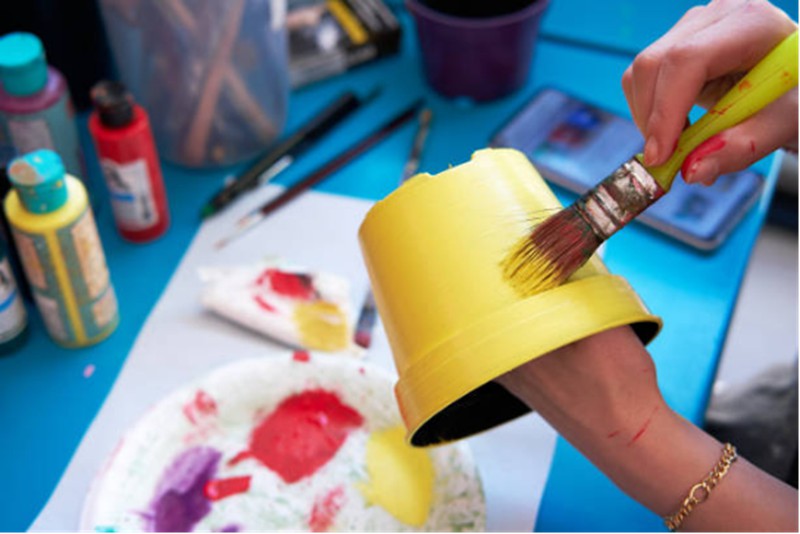
Step 1: Sand the Surface
The first step is similar to when using spray paint. Sand the surface of the plastic with fine sandpaper.
Step 2: Clean with Rubbing Alcohol
Wipe the surface down with rubbing alcohol or isopropyl alcohol to get the dust and particles out properly.
Pro Tip: Use a disposable cloth for this task, but read the manufacturer’s manual on the can to avoid fire hazards from improper disposal.
Step 3: Apply Primer
Apply the primer to the surface of the plastic. Two coats are good enough, so it’ll not be too thick.
Step 4: Use Your Paint Thinner
Mix the paint with paint thinner to give it a lighter consistency.
Step 5: Paint
Paint the plastic with acrylic plastic paint and leave it to dry. When the paint has dried, apply another coat to the object and allow it to dry again. It is important to note that the texture will differ when painting with a paintbrush versus spraying.
You should be prepared for this because the flat brush’s line marks will be visible. This texture can also be an aesthetic appeal, depending on what you’re going for.
Step 6: Seal Your Work
Finally, seal with a paint sealer. You seal your paint job to prevent future cracks and peels.
Frequently Asked Questions
Can I Rub off Paint from Plastic?
Yes, you can. You can use isopropyl alcohol, commonly known as rubbing alcohol, to remove paint from plastic. You can also use paint thinner, but the plastic has to be thick, so it doesn’t melt.
Do All Paints Stay on Plastic?
Some types of paint are formulated especially for plastics since some regular ones will peel off. You can find such at your local paint stores. However, with proper preparation, the regular paint can stay on plastic.
Can I Paint Plastic with Emulsion?
Yes, you can. However, painting plastic with emulsion will require thorough preparatory work. This work will entail sanding. More importantly, you’ll need to find a good primer and sealant because it can easily crack and peel if the primer isn’t strong enough or wash off if exposed to water frequently.
Final Words
Aside from the joys of painting, you benefit from a newly transformed piece, artwork, or decorative ornament. Depending on the size and amount of objects you want to paint, you can do a plastic painting job as a pass time or a big-time project.
Remember to take safety precautions as you complete this task to protect your space and health. Using the proper tools is also a precaution.
For an optimum experience, follow the step-by-step process and other tips we provide here. Please leave your comments and inquiries in the comment section.


